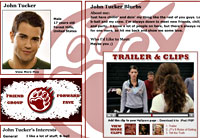 Currently listed as the fourth most popular English-language Website on the planet and the sixth most popular in any language, MySpace has become a social networking phenomenon, and looks set to notch up an amazing 100 million accounts in the next few days. As we publish, it’s sitting on 99,677,398 after being on 99.4m yesterday.
Currently listed as the fourth most popular English-language Website on the planet and the sixth most popular in any language, MySpace has become a social networking phenomenon, and looks set to notch up an amazing 100 million accounts in the next few days. As we publish, it’s sitting on 99,677,398 after being on 99.4m yesterday.
A little bit of history
The Website first started life back in 1998, offering a small amount of online storage space to members, which increased as they referred new members to the site.
The idea failed to generate enough revenue, and closed down in May 2001, with a senior analyst at Nielsen/NetRatings commenting that online storage sites were “having a hard time surviving.” How times have changed.
The return of MySpace
The MySpace service we all know and (possibly) love now was launched in July 2003 with Tom Anderson and Chris DeWolfe at the helm, backed by a small team of programmers.
The site quickly became a hit with new bands trying to make a splash, and with music fans looking for new sounds, as well as teenagers looking for a bit of social interaction and networking.
 To the chagrin of many of its users, Rupert Murdoch whipped out his fat wallet in July 2005 to the tune of $580 million and added MySpace to his News Corporation empire.
To the chagrin of many of its users, Rupert Murdoch whipped out his fat wallet in July 2005 to the tune of $580 million and added MySpace to his News Corporation empire.
News that he’s signed a deal with Google and extracted a minimum of $900m from them, will be one in the eye for those were asking how he was going to make his money back. He’s nearly doubled his money with that one deal.
MySpace becomes part of pop culture
MySpace’s compelling mix of user-submitted blogs, profiles, bands, photos, MP3s, videos backed up by an internal e-mail system has seen the site become an integral tool for new bands and filmmakers, making it an increasingly influential part of modern pop culture.
In July 2006, MySpace was the most popular site in the United States, accounting for 4.5% of all Website visits and 80 percent of all visits to online social networking Websites.
According to Nielsen//NetRatings, MySpace enjoyed a hefty 45.7 million unique visitors in June 2006, with users spending an average of nearly two hours on the site at a time.
Now boasting 300 employees, MySpace claims 500,000 new members each week.
 Commercial synergy ahoy!
Commercial synergy ahoy!
With such a high profile, it’s not surprising to see marketing types crawling all over the site, with a popular ruse being to create real-looking profiles for fictional characters in commercial TV and film offerings.
Ricky Bobby’s profile on MySpace has 47,000 “friends” and has a profile listing his favourite music and movies.
Users looking to hook up with Ricky might be in for a disappointment though as he’s a made-up character, with the MySpace profile being used as a marketing tool to promote the movie he appears in.
To further increase the popularity of the page and increase the movie’s profile, Ricky’s page also offers inducements (badges, comps) to get users to add him as a ‘friend.’
Ricky isn’t alone either, with the lady-charming John Tucker character from the “John Tucker Must Die” film also boasting his own MySpace page (as do each of his equally fictional four girlfriends).
All these fake pages bring in extra income for News Corp, who let marketers add extras like longer videos, more pictures and movie trailers for a fee.
Other media outlets have chosen to create profiles to promote themselves, including the new Murdoch-owned television broadcast networks The CW and My Network also looking to get hip with the kids via their own MySpace pages.
It’s also getting quite popular with call girls and purveyors of porn. Surprising that they were so slow on the uptake really – they normally lead the industry in developments.
The future
Although we can’t see MySpace disappearing any time soon, in the fickle world of online social networking things can change every quickly indeed.
Last month, Web measurement site Hitwise were reporting that the fast-growing new boys YouTube had already overtaken MySpace – a site that was virtually unknown this time last year.
With YouTube fast becoming the new place to hang out, recent reliability issues haven’t helped MySpace either.
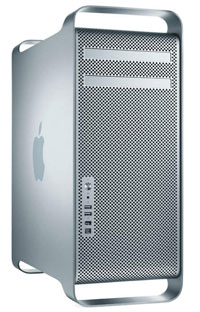 Apple has announced the new G5 PowerMac, a quad Xeon, 64-bit desktop workstation stuffed with two new Dual-Core Intel Xeon processors running up to 3.0 GHz which are claimed to deliver “up to twice the performance of the Power Mac G5 Quad.”
Apple has announced the new G5 PowerMac, a quad Xeon, 64-bit desktop workstation stuffed with two new Dual-Core Intel Xeon processors running up to 3.0 GHz which are claimed to deliver “up to twice the performance of the Power Mac G5 Quad.” Graphics are taken care of with a NVIDIA GeForce 7300 GT with 256MB of video memory, with dual-display support.
Graphics are taken care of with a NVIDIA GeForce 7300 GT with 256MB of video memory, with dual-display support. Sony has released details of the Mylo, a groovy new Wi Fi-enabled personal communications device aimed at Instant Messaging nutters.
Sony has released details of the Mylo, a groovy new Wi Fi-enabled personal communications device aimed at Instant Messaging nutters.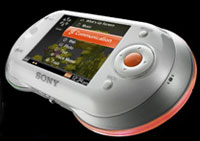 For teens who, like, don’t find email too slow for their hyperactive needs, there’s also an e-mail client, compatible with services such as Yahoo! Mail and the Gmail web mail service.
For teens who, like, don’t find email too slow for their hyperactive needs, there’s also an e-mail client, compatible with services such as Yahoo! Mail and the Gmail web mail service.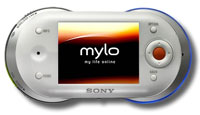 Battery life looks pretty good too, with a claimed 45 hours of music playback and around seven hours of instant-message chatting/Web surfing.
Battery life looks pretty good too, with a claimed 45 hours of music playback and around seven hours of instant-message chatting/Web surfing.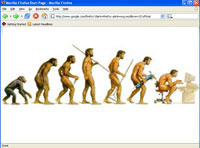 A new survey by service comparison firm USwitch.com claims that Britain’s 10 million broadband users are spending an average of nearly a whole day online every single week.
A new survey by service comparison firm USwitch.com claims that Britain’s 10 million broadband users are spending an average of nearly a whole day online every single week. Internet telephony looks to be continuing its explosive growth, with one in eight people of those surveyed saying that they’d used net telephone calls using technology like VoIP software such as Skype.
Internet telephony looks to be continuing its explosive growth, with one in eight people of those surveyed saying that they’d used net telephone calls using technology like VoIP software such as Skype. Search engine giants Google have introduced a new feature which alerts punters about search results that could potentially lead them to dodgy sites with malicious code.
Search engine giants Google have introduced a new feature which alerts punters about search results that could potentially lead them to dodgy sites with malicious code. With search engine results routinely displaying links to sites stuffed full of spyware and adware, it is reckoned that US surfers arrive at on malicious sites about 285 million times per month – all from clicking on search results from the five major search engines.
With search engine results routinely displaying links to sites stuffed full of spyware and adware, it is reckoned that US surfers arrive at on malicious sites about 285 million times per month – all from clicking on search results from the five major search engines.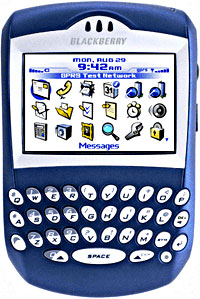 Like the Black Knights in Monty Python’s ‘Holy Grail,’ PDAs are refusing to be beaten, despite almost monthly declarations of their impending obsolescence.
Like the Black Knights in Monty Python’s ‘Holy Grail,’ PDAs are refusing to be beaten, despite almost monthly declarations of their impending obsolescence. This explains how worldwide PDA end-user revenue fell by 4.1 percent last year to $1.38 billion in the second quarter of 2006.
This explains how worldwide PDA end-user revenue fell by 4.1 percent last year to $1.38 billion in the second quarter of 2006. When it comes to convergence, we’re always on the look out for shiny new smartypants devices, even if we’re not always totally convinced about their usefulness.
When it comes to convergence, we’re always on the look out for shiny new smartypants devices, even if we’re not always totally convinced about their usefulness. We love it when people adapt
We love it when people adapt  Still, as an office timewaster it’s second to none, and well worth a go.
Still, as an office timewaster it’s second to none, and well worth a go.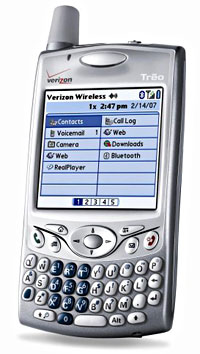 For a self confessed, gimme-gimme-shiny-new gadgets nutcase like me to be using a phone several years old speaks volumes of the strengths of the Treo 650.
For a self confessed, gimme-gimme-shiny-new gadgets nutcase like me to be using a phone several years old speaks volumes of the strengths of the Treo 650. If I’d have taken my Windows Mobile phone I dare say I would have been very well acquainted with stylus (and the reset button) by this time, but the Treo’s fabulous one-handed operation and rock solid performance made it a practical laptop replacement.
If I’d have taken my Windows Mobile phone I dare say I would have been very well acquainted with stylus (and the reset button) by this time, but the Treo’s fabulous one-handed operation and rock solid performance made it a practical laptop replacement.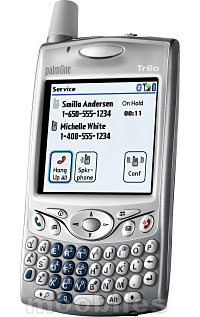 Palm has remained tight-lipped about their European product roadmap, with the web rife with rumours of both Windows and Palm new models going under ggroovy codenames like Hollywood, Lowrider, Nitro and Lennon.
Palm has remained tight-lipped about their European product roadmap, with the web rife with rumours of both Windows and Palm new models going under ggroovy codenames like Hollywood, Lowrider, Nitro and Lennon. The mobile division of TV production company Twofour and Player One Sports are working together to create a weekly short form TV show covering the Australian portion of the Ashes tour for portable devices.
The mobile division of TV production company Twofour and Player One Sports are working together to create a weekly short form TV show covering the Australian portion of the Ashes tour for portable devices.